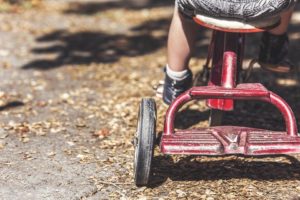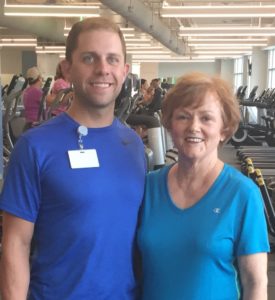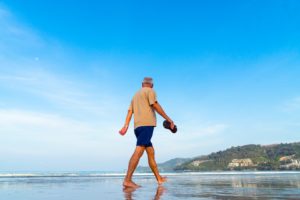by Michelle Sutton-Kerchner
Nearly 13 million adults aged 65 and older in the United States are obese, according to a study published on MedlinePlus. Not only can seniors exercise, they should …
 Baby boomers spent childhood in a different world. Activity and imagination were self-generated. By nature, life took more sweat and physical effort. A simple chat with a friend may require walking to a neighboring home. Playing involved jump ropes, hopscotch, and bikes.
Baby boomers spent childhood in a different world. Activity and imagination were self-generated. By nature, life took more sweat and physical effort. A simple chat with a friend may require walking to a neighboring home. Playing involved jump ropes, hopscotch, and bikes.
The Birth of Fitness Movements
Formalized exercise periods, sports, and scheduled activities are a necessity of our times. Without them, today’s children could spend endless hours in front of screens where their only activity is visual. Digital plots, games, and messages even advise what to think and how to react (emoji language, anyone?). Enter: a world evolving with health and fitness initiatives never before experienced.
A Thriving Example
Member Pat admits to a sedentary lifestyle. At 65 years old, she had become inactive despite a lifetime focused on her health and that of others. A registered nurse who worked in in-patient rehab, she was fully aware of what happens when health is neglected. Poor economy led to her job loss and weight gain.

Pat joined the Center to ease her fear of looming obesity-related health issues, specifically diabetes, heart disease, and hip fractures. She worried about becoming a burden to her children, and requiring long-term care as she aged. (Something she witnessed in her professional life.) She was fatigued, suffered heel pain, and had high blood pressure. Six months later, Pat already is enjoying the results of exercise. Fitness surpassed age.
“I haven’t reached all my goals yet, but I am steadily losing two pounds of fat each month. My heels stopped hurting. I have more energy and sleep better. My blood pressure improved. My resting heart rate dropped from 72 to 55 beats per minute,” Pat informs.
Six months training with Personal Trainer Andrew are reflected in her impressive stats:
January, 2017: Body fat mass: over 42%; visceral fat level: 16; body mass index: 28.
July, 2017: Body fat mass: down to 36%; visceral fat level: 12; body mass index: 26.4.
Pat lost 14 pounds of fat, removing two inches from her waist. She gained three pounds of muscle. Not an easy feat, at any age. Her results were mainly from strength training. High-intensity cardio was not incorporated.
Making the Investment

It takes determination—and a bit of bravery—to begin a fitness program. For some, it’s beginning again after being out of commission from an injury, illness, or other less-legit excuses. For others, it is beginning for the first time, sometimes after decades of a sedentary lifestyle. A week’s absence from the Fitness Floor may seem daunting. Imagine half a century. Pat took the stress of fear and used it to motivate herself into action.
Redefine Fitness
During their youth, baby boomers’ exposure to fitness often was limited to gym period at school. Gym uniforms were common, their limitations indicative of the type of “exercise” performed. Workouts, particularly weightlifting, were associated with football players and the wrestling team.
As we continue to learn fitness’ value in a healthy lifestyle, more emphasis is placed on exercise, and its methods and opportunities. Fitness beyond its association with physique and athletics is a relatively new concept. WebMD defines it well:
“Fitness means being able to perform physical activity. It also means having the energy and strength to feel as good as possible.”
This innovative definition speaks to all generations, because who doesn’t want to function fully and feel as good as possible.
Tips for Late-Bloomers
After a lifetime of working and childrearing, senior years are a great time to embark on fitness endeavors. Here are some tips for late-blooming boomers:
- Get a physical. A thorough health check assures a safe, effective workout. Routine tests help determine areas in need of attention. Workouts can be customized; for example, cholesterol-lowering aerobic routines, bone-strengthening weightlifting, or arthritis-relief aquatic workouts.
- Work with a personal trainer and Center nurse. They help improve confidence and monitor progress as you learn. The nurse is readily available to check your blood pressure, heart rate, and weight as well as handle health concerns.
- Start slowly. Learn which classes and equipment are best for beginners, and how to modify as your skill level increases.
- Try a variety. Just because you didn’t like group workouts as a kid, doesn’t mean you won’t enjoy a Pilates Barre class today. (We’ve come a long way since gym calisthenics.)

Exercising– even later in life, even in short amounts– can improve your health. Just ask members like Pat.
“I decided to invest in my health. I’m so glad I did. I no longer worry about the possible need for assisted living. My friends tell me I look great. I am healthier, and that is the best outcome,” Pat shares.
Sources
“Exercise Can Keep Obese Seniors on the Go, by Robert Preidt at https://medlineplus.gov/news/fullstory_167040.html.
Webmd.com/fitness-exercise/default.htm.
Image Credits
Old-fashioned tricycle: pixabay.com/en/children-toys-bicycle-son-1217246
Bank: www.flickr.com/photos/68751915@N05/6793821977
Beach walk: pixabay.com/en/beach-senior-man-male-walking-2090091
 Fitness & Wellness News Your Source for Fitness News, Wellness News, Health News, and Nutrition News!
Fitness & Wellness News Your Source for Fitness News, Wellness News, Health News, and Nutrition News!




